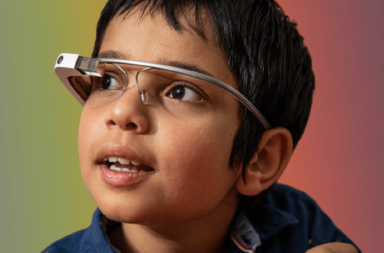In children with autism, aggression is said to be so common that 56% of kids on the spectrum are regularly engaging in aggressive acts both on and off the playground. This is pretty high when compared to the aggression levels in other neurological conditions (7-11%). However, I find it odd that many of these reports come from second-hand data rather than someone who is themselves autistic.
This isn’t because of some underground conspiracy in which ‘the first rule of autism fight club is you don’t talk about autism fight club’ though. Instead, this is because, verbal or not, autistic people rarely get the chance to share our side of the story – resulting in skewed impressions that autistic people are one bad day away from going nuclear. So, let’s see if we can change that narrative…

What is the Cause of Autistic Aggression at School?
Unlike a typical schoolyard scuffle, autism aggression stands out on the playground in that, at times, the target of our attack may seem unexpected and irrational. Of course, this doesn’t look great for our community, when in response to (apparently) nothing, we lash out at those who usually offer us support. However, there is always a reason behind these outbursts which are so misguided that they make the Monopoly board look like a functional map of London.
This is best explained by Dr Tony Attwood’s Dr Jekyll and Mr Hyde analogy; a comparison which, while I am not exactly comfortable with (due to the connotations that autistic people are like monsters), does aptly illustrate how autistic people can have entirely different triggers depending on a time and place.
For example, while an autistic child may be unphased by hearing singing whilst at home (a place we associate with fun and freedom), at school we might become angry at hearing the same sound, as our past experiences have made us see school solely as somewhere for seriousness (trying saying that 5 times!).
In response to this, we may become distressed and easily agitated – as though our world suddenly doesn’t make sense and, while we can carry this irritation for quite some time, there always comes a tipping point where our obsession with the earlier anomaly makes us meltdown.

My Experience of Rage in the Playground
Responding to external stimuli isn’t entirely to blame for aggression at school though as, for me, I was easily agitated from the moment the morning bell rang, to the last chime signalling the close of the school day.
According to my sister, Lizzie, this meant that “while some would stay away from you because you were scary, others found it exciting and would try and make you mad […] You would start seeing red and they would see a million different colours as you tried to move away. You were like a very bitter rainbow.”
This pretty much always ended badly for me, rather than those who had provoked me. As Lizzie recalls, “if you didn’t calm down you would see everyone as the enemy [which usually resulted in explosions that could put a Kiss concert to shame] – and then you would be locked up in a classroom to cool down.”
The problem this posed for my sister was that, in my absence, children would direct their anger at her which, amongst other reasons, resulted in Lizzie having to move schools. So what could have been done to make this end differently?

How to Help an Autistic Child with Aggression at School
Whether a child with autism is acting in response to the Dr Jekyll and Mr Hyde theory or whether they are being provoked into an outburst, the takeaway here is that (verbal or not) it’s oh so important to listen to what that autistic child is trying to say with their aggression.
Solutions to this can be as simple as giving an autistic person a stress gauge (which allows us to visually express how we are feeling with a traffic light system) or, if communication is more complicated, then it’s time for you to get out your magnifying glass and deerstalker hat and go look for clues.
In some circumstances, this has revealed that acts of biting were an expression of dental problems (such as those seen here), while monitoring the surroundings of repeated outbursts has unveiled everything from targeted bullying to sensory processing problems. In my case, when my family realised I would become aggressive before school, as I couldn’t stand the feel of my uniform compared to my pyjamas, this was then resolved by allowing me to wear my uniform over said pyjamas in class (yes, it was very hot, yes, it was worth it!).
Although, I am in no way trying to shift the responsibility of my younger self’s rage, I do believe that my experience demonstrates that there are two sides to every story and, as such, while I am willing to believe that of 56% of autistic people are regularly becoming regular aggressive, I can’t help but feel certain that in a good number of these cases there is an opportunity to make our aggression less aggressive.

Carry on the Conversation
What do you think can be done to help autistic people with aggression? Let me know in the comments below. And, if you would like to hear more about how autistic people can become impulsive then make sure to check out my article on Autism & ADHD.
As always, I can also be found on Twitter @AutismRevised and via my email: AutisticandUnapologetic@gmail.com.
If you like what you have seen on the site today, then show your support by liking the Autistic & Unapologetic Facebook page. Also, don’t forget to sign up to the Autistic & Unapologetic newsletter (found on the sidebar on laptops and underneath if you are reading this via mobile) where I share weekly updates as well as a fascinating fact I have found throughout the week.
Thank you for reading and I will see you next Saturday for more thoughts from across the spectrum.


